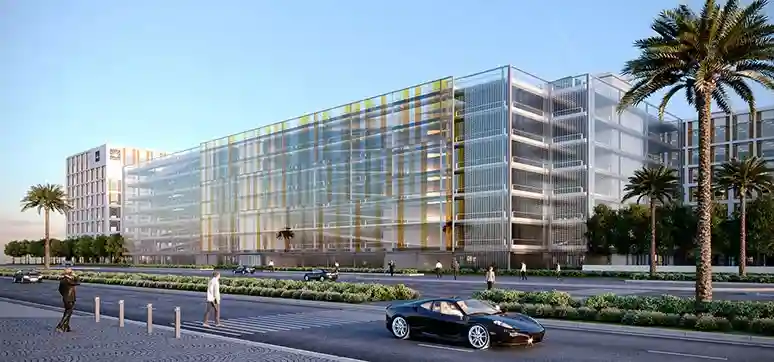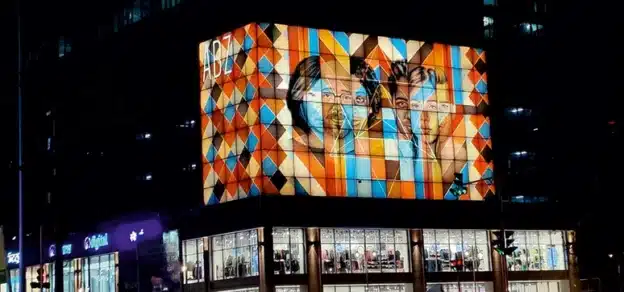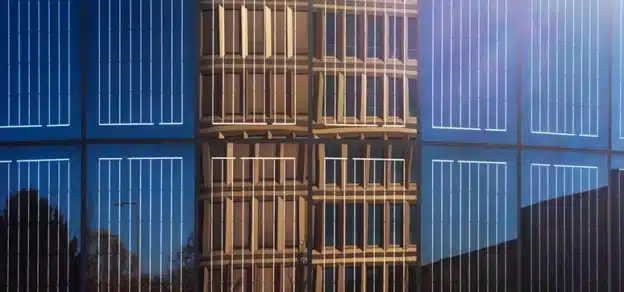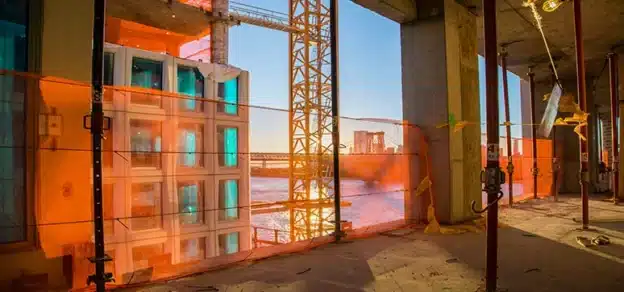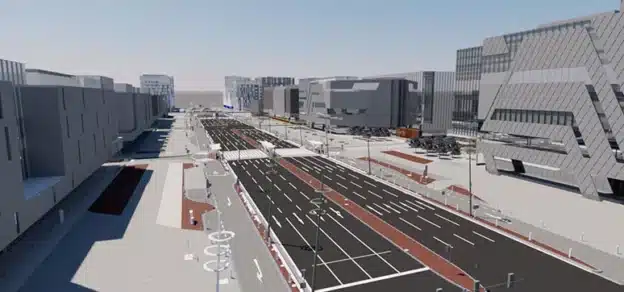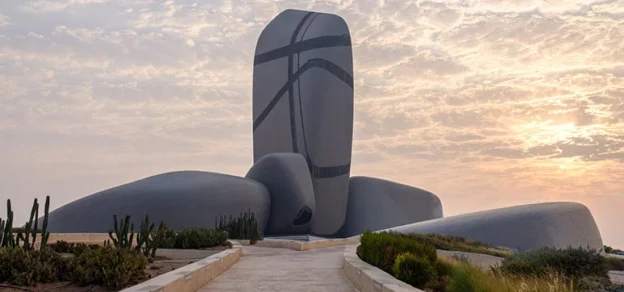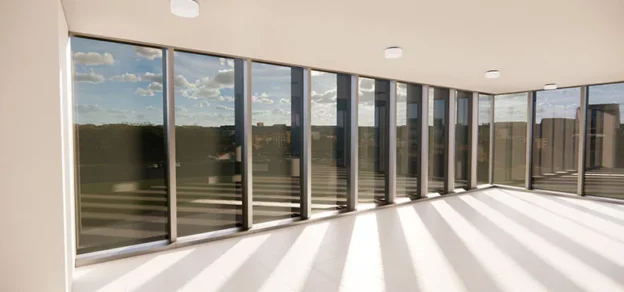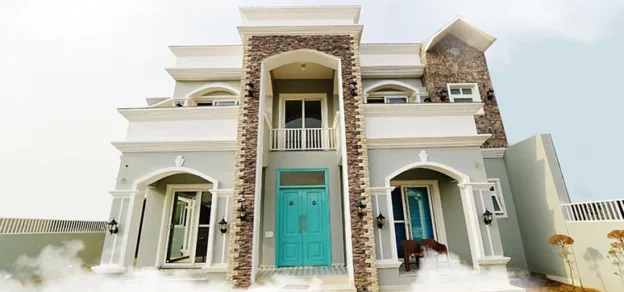The emergence of CAD technology transformed manual drawings into electronic drawings which helps to cut the production time and cost of each design company around the world. Since we are already entered a new age, the Implementation of BIM has started around the world. Even here in the UAE, the government started mandating everyone to adapt to this so-called BIM. Building Information Modelling (BIM) is a process of managing the use of digital 3D models, the main purpose is to facilitate collaboration during the design process. A BIM model contains all the information necessary to define the project design. The use of BIM has already shown benefits in design, construction, and facility management, reducing the cost, schedules, and better quality.
HOW ABOUT IN FAÇADE?
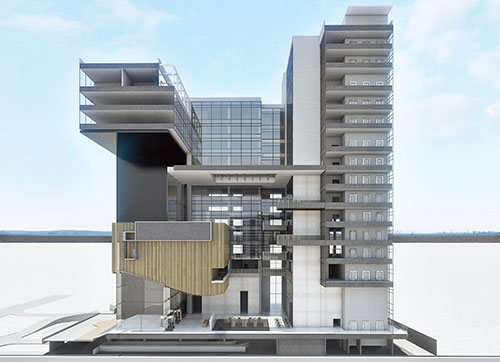
The façade or exterior envelope of a building is the element that makes the internal space habitable, it acts as a skin allowing beneficial elements of the external climate whilst providing a barrier to the less desirable elements. Façade or envelope design will start with the architect. The architect will design the façade according to his imagination intent, and character he/she wants on the building, and at the same time meet the energy efficiency required. During the design process, the architect will work with several specialists that will be involved in the design process like a structural engineer- who will provide support and connection on the façade, a façade engineer – who will work on the constructability of the façade design, an interior designer- who will check how the interior design will talk to the exterior envelope, lighting specialist- who will design and light up the façade, and a sustainability specialist- who will work with the architect to achieve the energy efficiency criteria required.
Later on, contractors, suppliers, etc. will join the team during the construction stage.
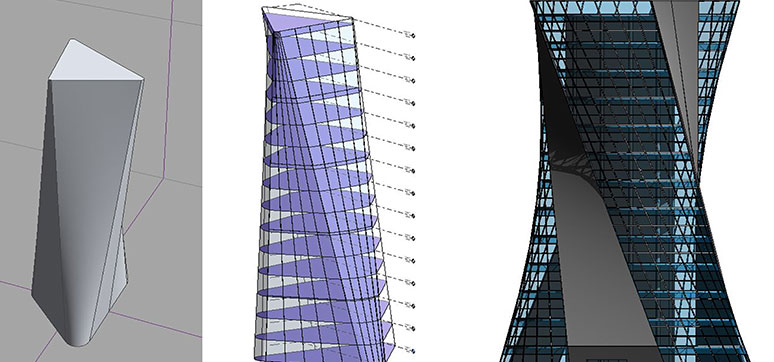
Since there is a lot of specialists and designers are involved in one single element, Building Information Modelling can allow for greater, more effective communication of quantities and details of a building between designers and specialists involved during the design and construction stage.
The information is shared on a Common Data Environment (CDE) which every individual will have access to in real-time, which everyone can work together efficiently and effectively.
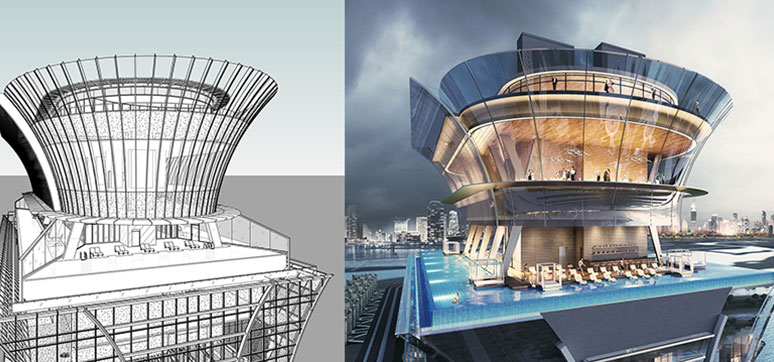
FAÇADE BIM MODELLING/CONCEPTUAL MASS
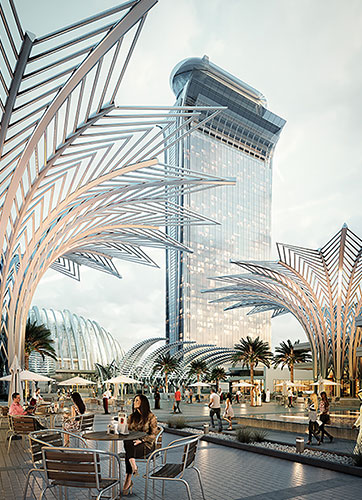
As I said the façade design will start with the architect. He can check and visualize the design by using BIM. There is a lot of BIM software in the market currently, every software can do conceptual massing, which I can say the 1st workflow in BIM. Conceptual mass is a 3D mass modeling and generally performed by architects and its main purpose is to create 3D models of the required shape of the building. By using this 3D modeling process, users create a base of any shape based on the architect’s imagination and intent. Once the architect is done, he/she can develop further by adding floors, roof, and exterior envelope/façade. The Sustainability specialist can start working with the architect and use the same conceptual mass to perform initial energy analysis.
PARAMETRIC FAÇADE DESIGN
BIM parametric design changes all the façade system and changes the façade panel shape, this helps the designer to explore more design option and schemes as he like. The Information is linked via the system in a digital parametric structured model so that when a change is made, components are updated automatically in line with specified parameters. Parametric is a process that is not only focused on an individual result, such as with traditional CAD design but rather describes the method of design. This process can be used to describe and automatically derive many different design variants. By this method, the façade’s design will be easy and less time-consuming.
CDE (COMMON DATA ENVIRONMENT)
According to Richard Mcpartland of NBS, the common data environment (CDE) is a central repository where construction project information is housed. The contents of the CDE are not limited to assets created in a ‘BIM environment’ and it will therefore include documentation, graphical model, and non-graphical assets. In using a single source of information collaboration between project members should be enhanced, mistakes reduced and duplication avoided.
The CDE is set up before the project starts. This platform will be used by all trades involved in the project. The goal is to improve the creation, sharing, and issuing of information that underpins the delivery of your project. The idea of collaboration to drive improved results and efficiencies is at the heart of implementing a Building Information Modelling (BIM) approach on construction projects.
The advantages are the following;
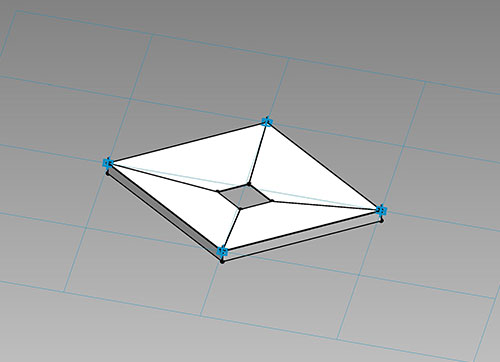
• Shared information should result in coordinated data which will, in turn, reduce both time and cost on your project.
• People involved in the project can generate the documents/ views they need using different combinations of the central assets, confident that they are using the latest assets (as are others).
• Spatial coordination is inherent in the idea of using a centralized model.
• Production information should be right the first time assuming that contributors adhere to processes for sharing information.
CLASH DETECTION
Clash detection is one of the critical parts of the BIM Modeling process. Depending on the scale of the project, one single project may consist of different models, like architecture, structure, MEP, and façade models which each trades will create an independent model. For this process, you need to provide a federated model, meaning a single model which contains all specific models as mentioned. Through clash detection via Building Information Modelling, you can already speed up the coordination by identifying all clashes between trades and providing the necessary solution during the design stage. The clash detection process identifies where the independent models clash with each other- finding where elements from one model overlap the elements of models from other architect-engineering design disciplines. Clash detection ensures every aspect works hand in hand and nothing is incompatible. Unlike the traditional way, most of the time these issues are resolved during the construction already since it was not required and mandated during the design stage.
Using advanced-stage computer-aided 3D modeling, the instances of last-minute hurdles due to inconsistencies in different models are eliminated. As all the things are taken care of during the design stage itself, clash detection saves valuable time, effort, and money throughout the entire BIM execution plan during a construction project.
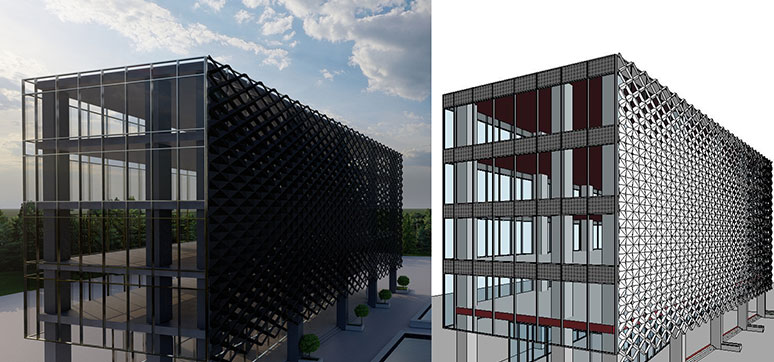
4D BIM (CONSTRUCTION SEQUENCING)
4D BIM is an extra dimension of information that contains a schedule. Based on the 3D BIM information, designers and project managers can use this information and create an accurate program on how the project will start and end during the construction stage. The project program which has been made by the project manager can be inserted into the 3D BIM model and create the 4D BIM or what we call the construction sequencing. This is like an animation that will show all components that will be built based on the program by using the 3D BIM models. This animation will show and help project managers, architects, engineers, and even clients to foresee how the construction will be and also help identify any issues along the way during construction. In façade, since this component will be somewhere in the middle of the program, everyone will have the ability to see how the façade components will be fabricated, delivered, and installed during construction.
5D BIM (COST)
5D BIM is another extra dimension in BIM, personally, this is one of the most important integrals in BIM modeling, because it is related to cost. The BIM model is composed of different elements, like walls, ceilings, floors, curtain wall systems, columns, etc. Each of these elements and systems contains metadata inside of it which is important to suppliers.
Metadata is information added to each element. Dimensions, finishes, fire rating, etc., depend on the element and system you have on the model are the information inserted on each element or object. These are critical information used in quantification and cost schedules. In a façade, you can generate the number of panels on each type used in the model. In this way, you can easily provide a quantification estimate as accurately as possible.
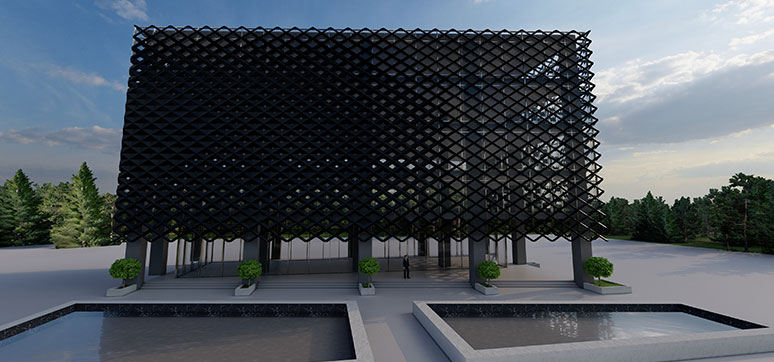
VIRTUAL DESIGN AND CONSTRUCTION (VDC) AND BIM
Due to VDC implementation, data can be reused and captured from conceptual design to prefabrication and apply the data to the entire construction process from ideation design to modular construction. BIM technology is a foundation for the implementation of VDC. BIM is correlated with the façade design field.
VIRTUAL ASSEMBLY
Centralized façade panels that are fabricated and assembled at the factory site, the builders working in the construction site have a good flair of façade panels for different façades designs, floor heights, and types. After the BIM façade design model is completed, the material components that are fabricated and assembled such as unit panels, keel frames, etc. are given a unique numeric code for data planning, then the façade model is assembled, and data is extracted to material list. The material list has a unique number given to components.
Fabrication and placement of material in design panels are according to numbers and units assembled in the unit template.
CONCLUSION
With the BIM process and technology involved, façade designers are successfully implementing a 3D model which assists them in showcasing building data, components, material fabrication process, cost of materials and improves the communication flow among other disciplines. Adapting to BIM can be difficult at 1st, especially for the firms that are starting to set up and invest in this process. Some companies are only required to do so because the project they undertaken required so, we should not look at it this way, but to look at how this BIM process will help and benefit us in the long run, not only in our company but also in the client and the construction industry.
